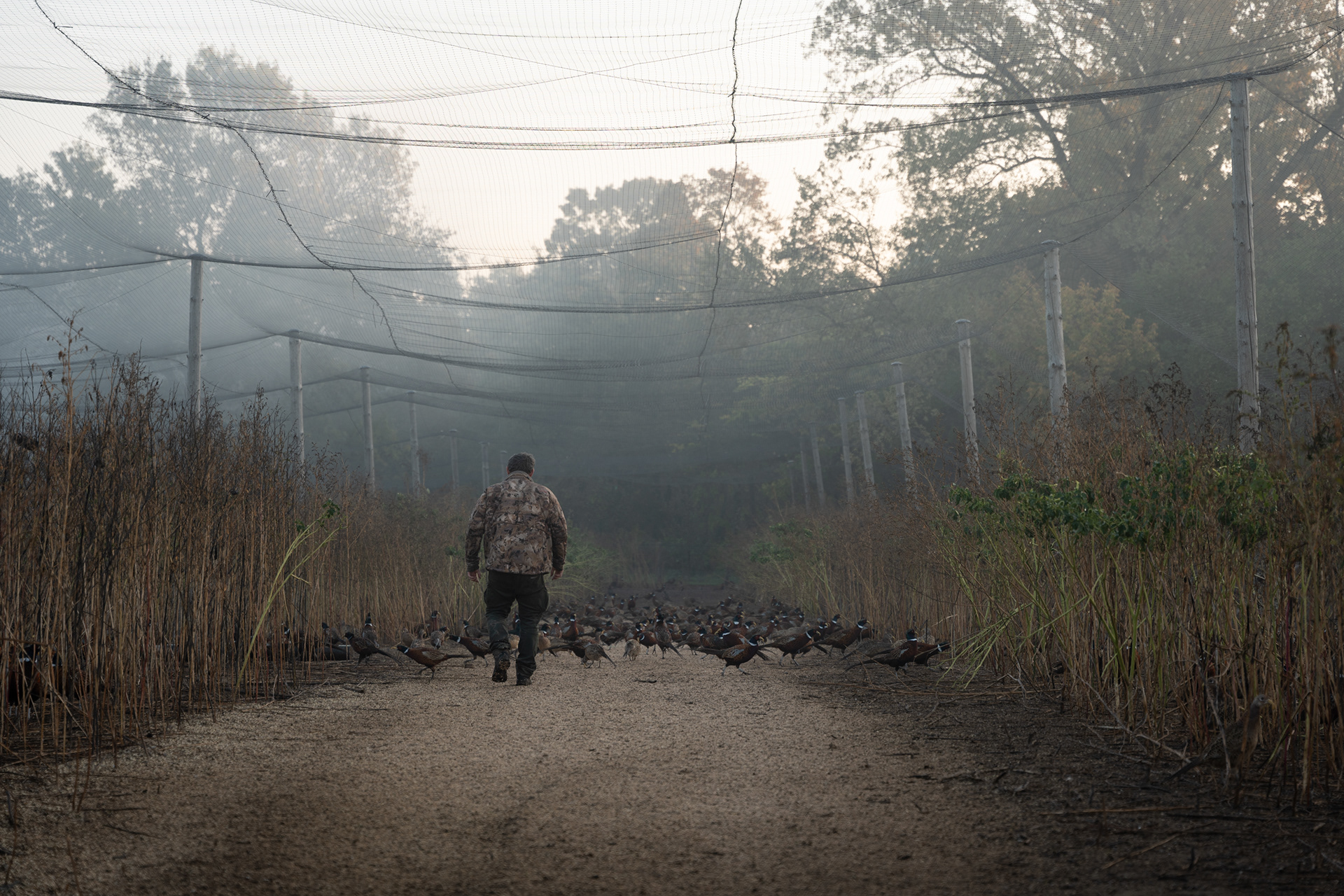As natural habitats shrink, wildlife management increasingly relies on artificial solutions. Many pheasants hunted during small game hunts are not wild-born but come from game farms run by hunting associations. These birds are released before the hunt to meet sport hunting demands, while also playing a role in population maintenance. My series explores this contradictory system—where shifting conditions blur the line between the natural and the artificial.
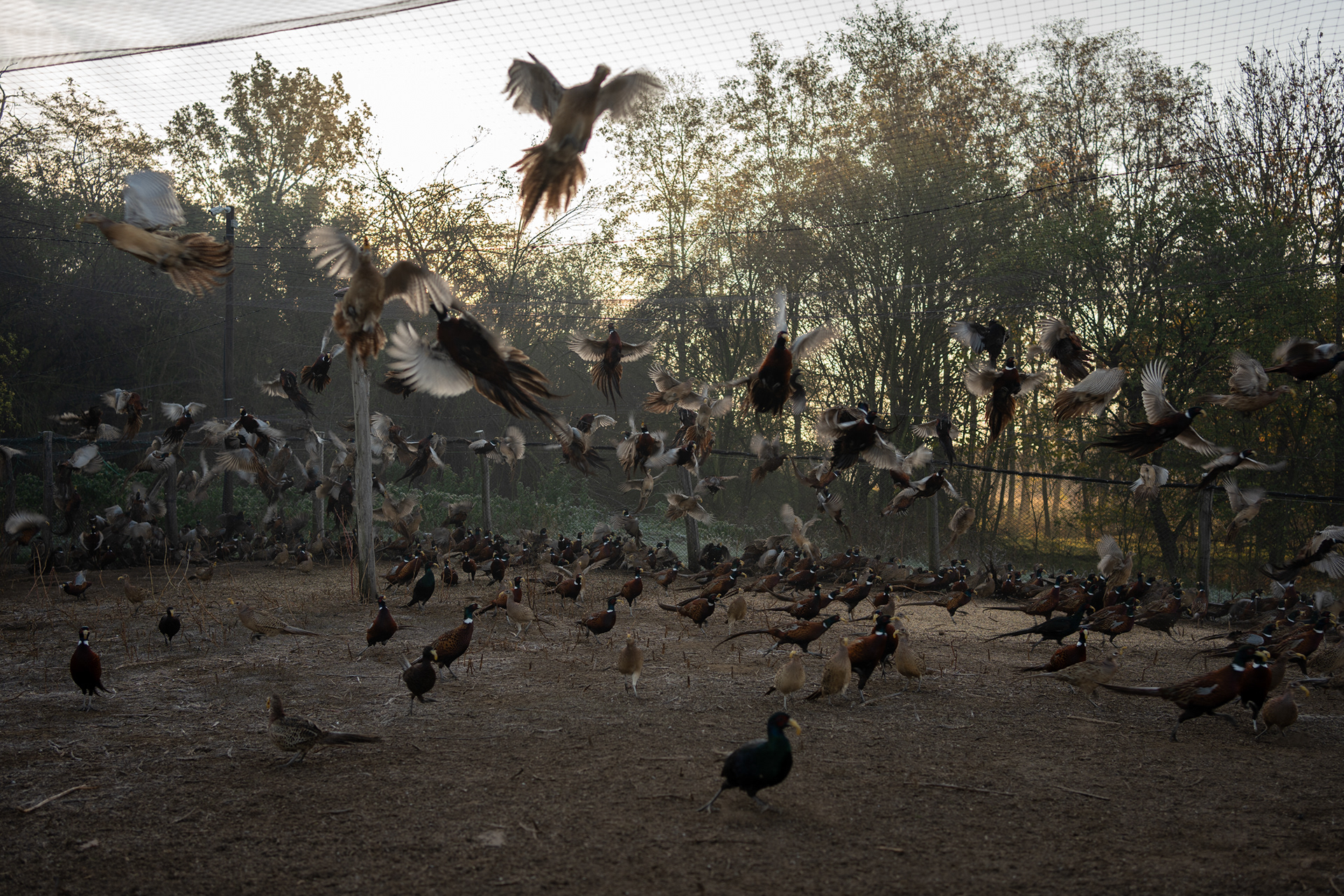
Artificial game breeding requires meticulous care and attention, adhering to strict regulations regarding animal husbandry conditions.
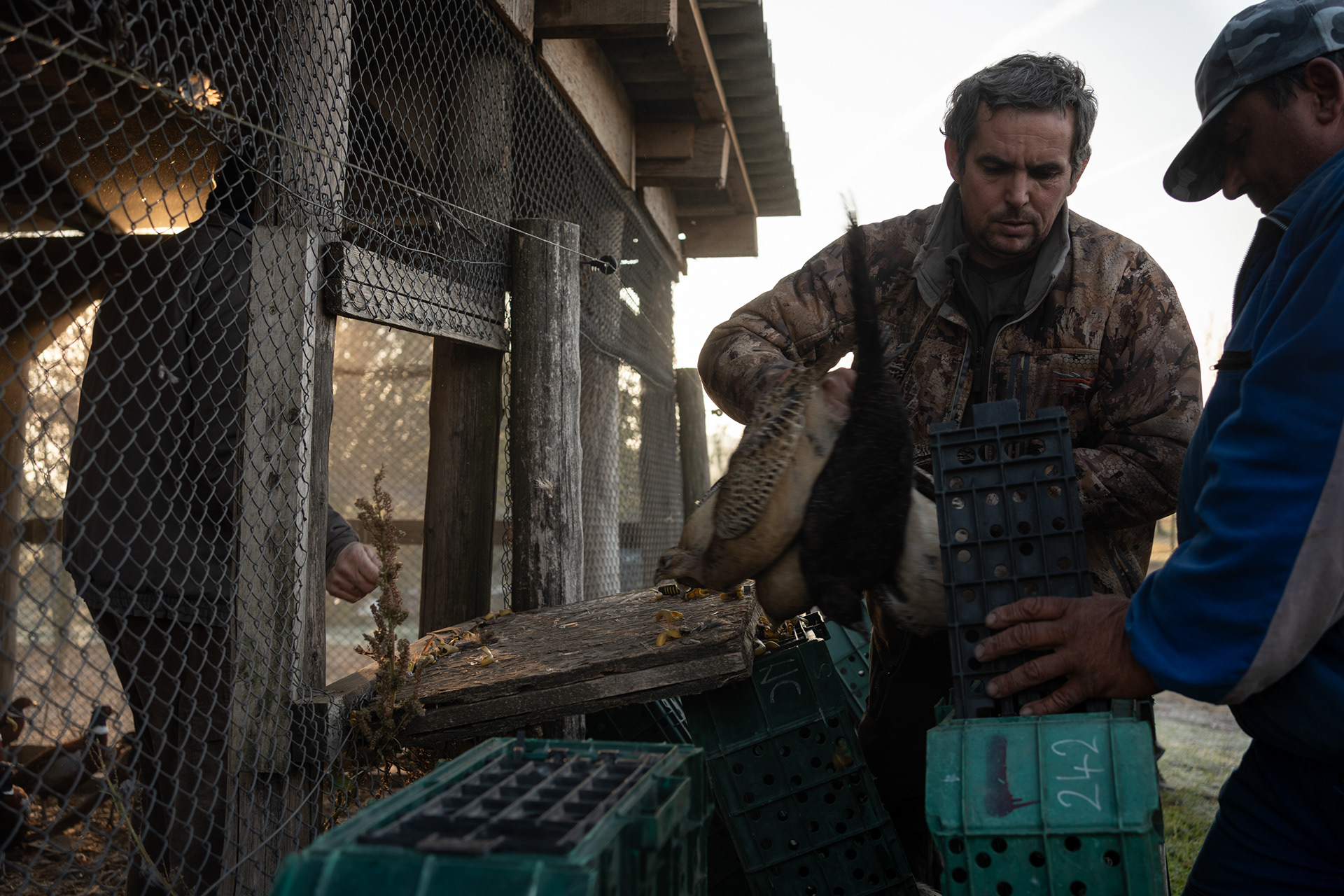
The pheasants are transported from the farm in crates for release in the hunting area. Releasing the reared birds for hunting requires prior veterinary approval.
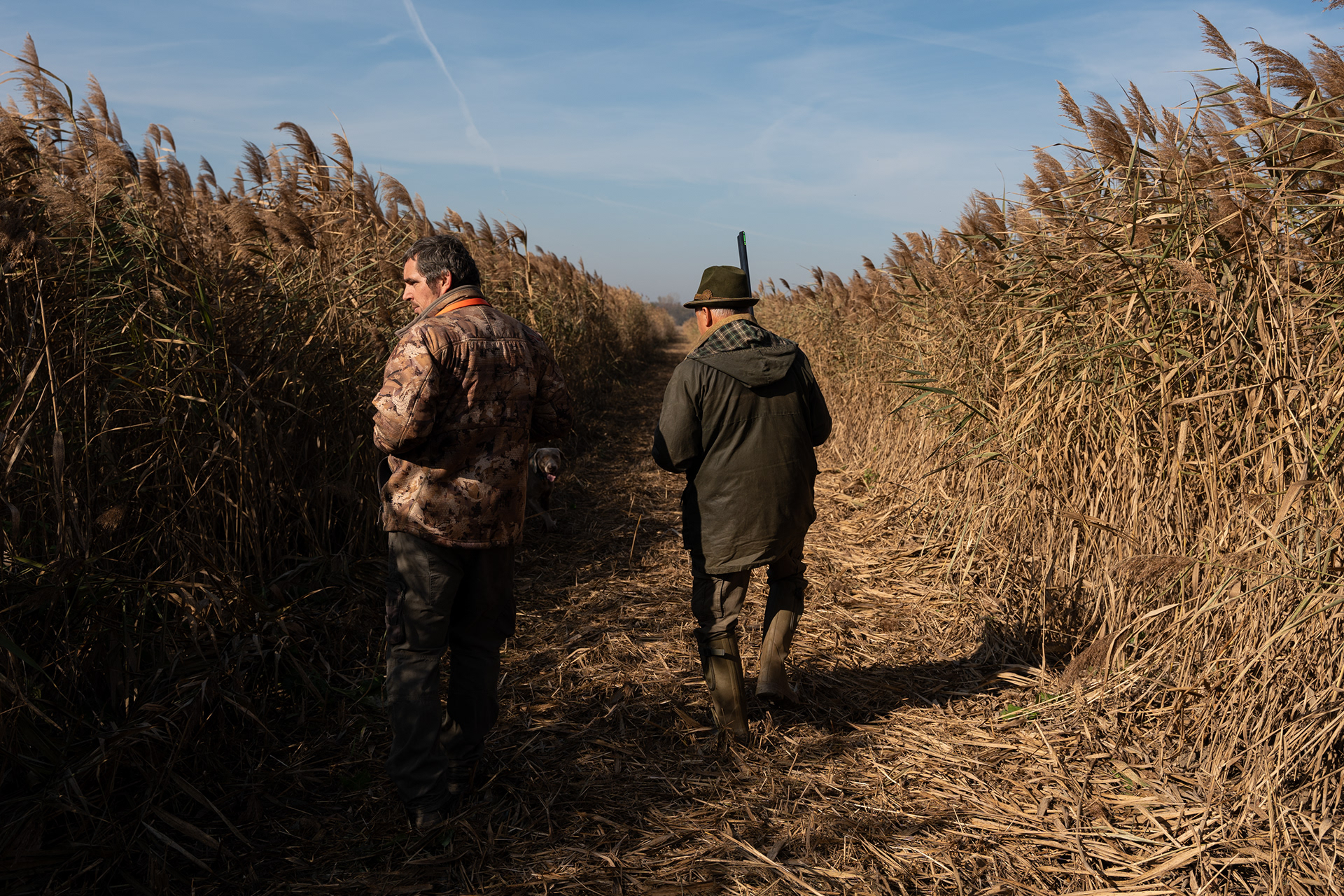
The gamekeeper escorts hunters during hunts and also directs group hunts, determining when and where the hunting takes place.
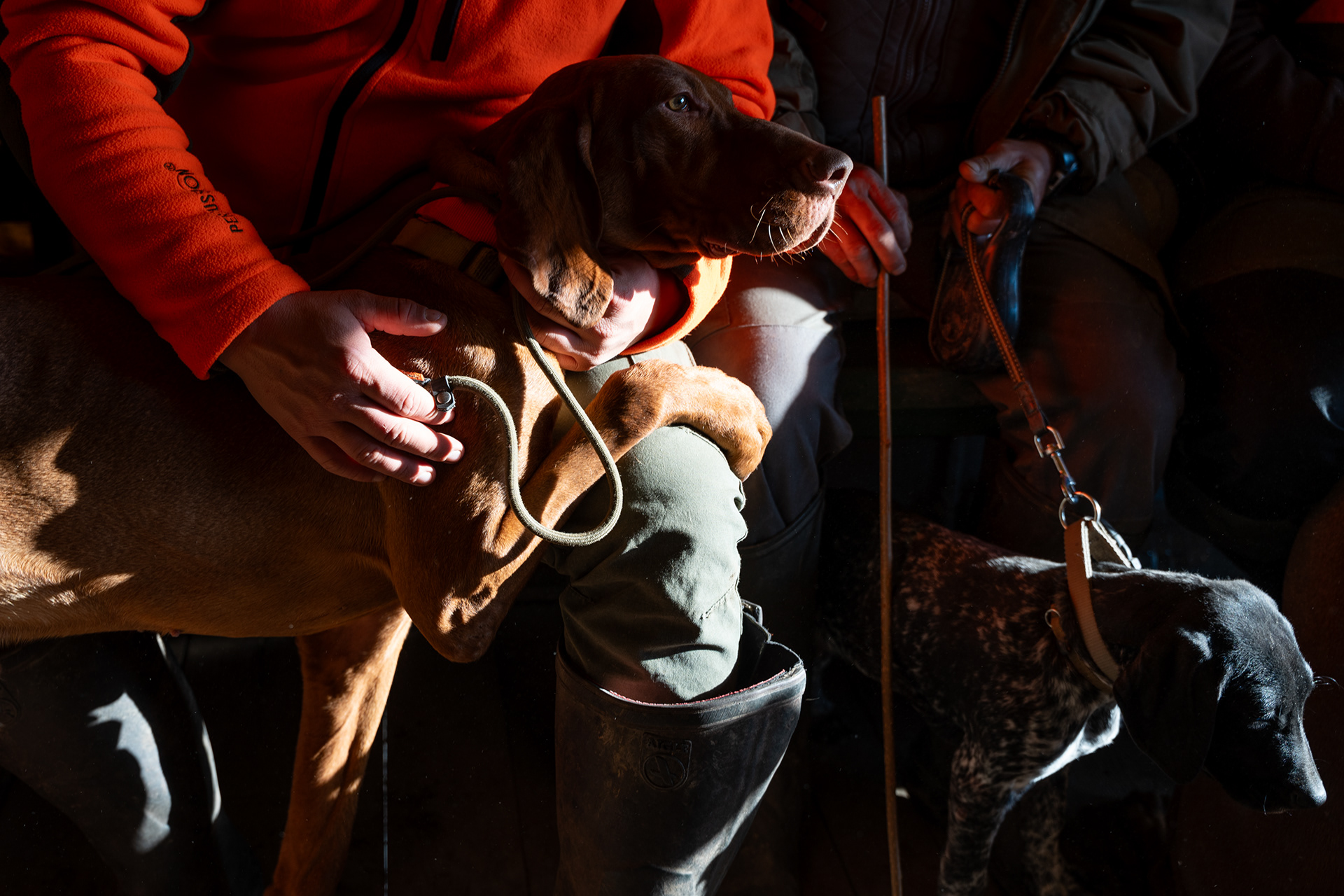
Hunting dogs perform both searching and retrieving tasks during a small game hunt.
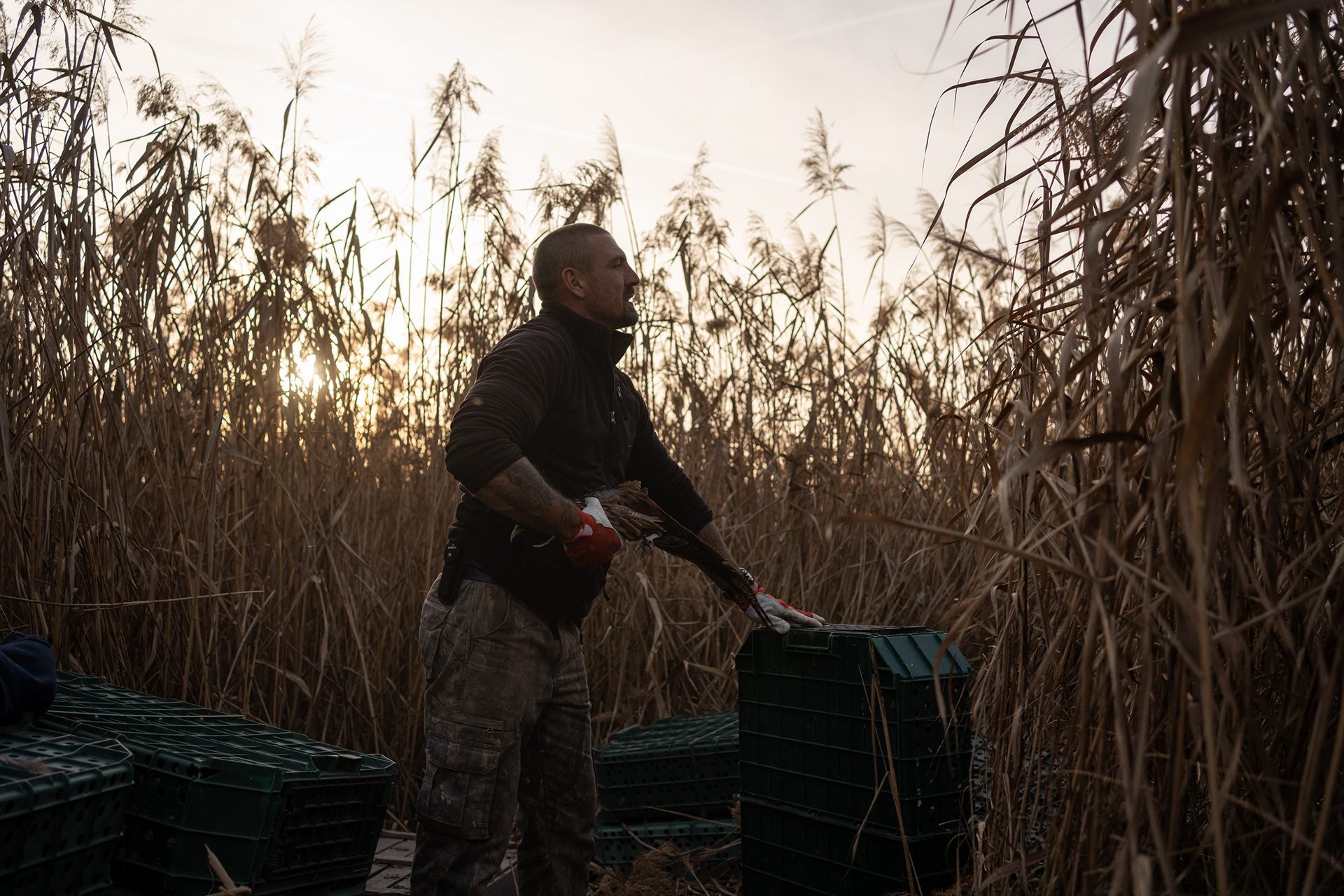
Releasing pheasants before the hunt.
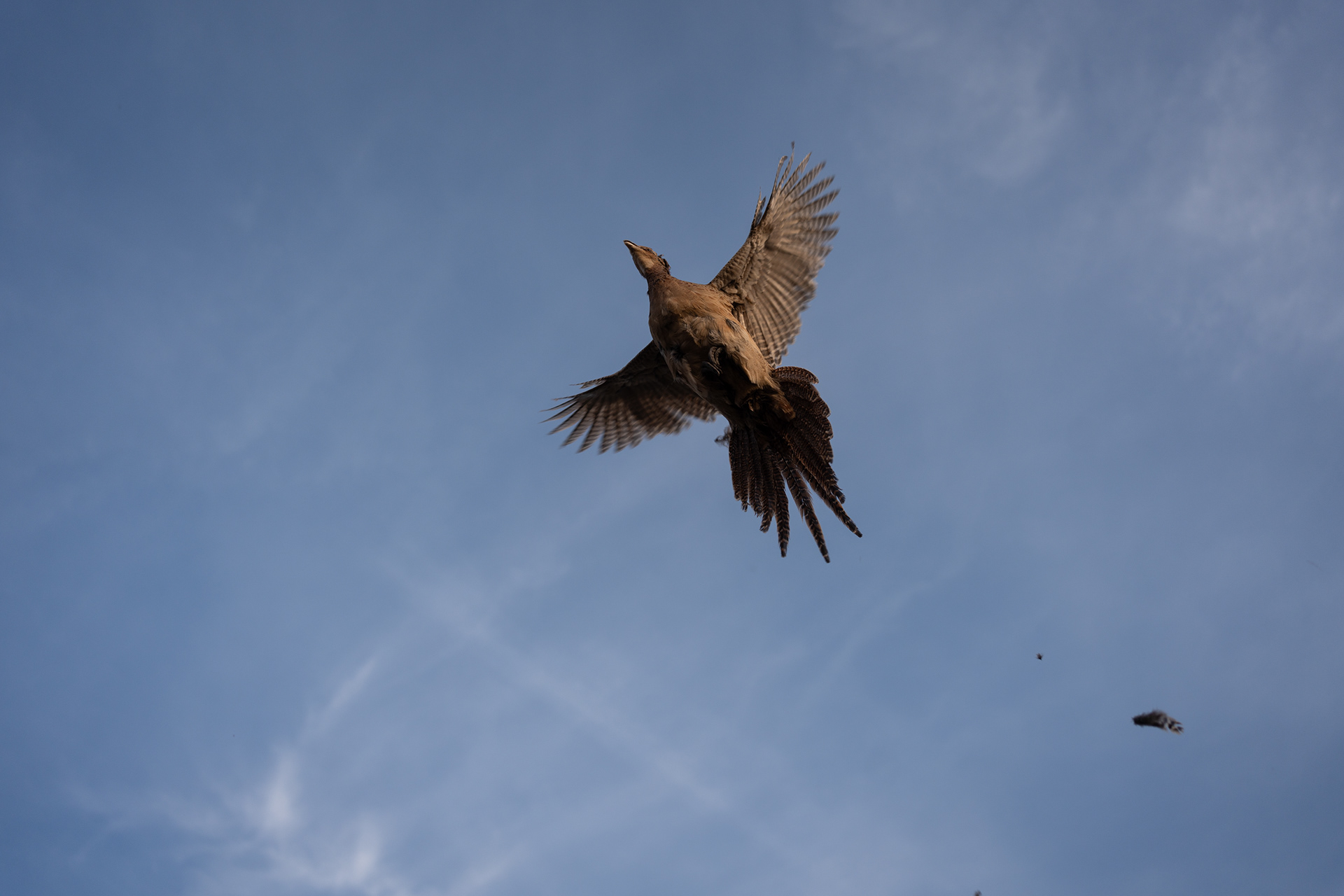
According to the 2023/24 report of the Wildlife Management Database, the estimated pheasant population in Hungary exceeds 571,000. In 2024, more than 700,000 birds were reported for planned artificial pheasant breeding.
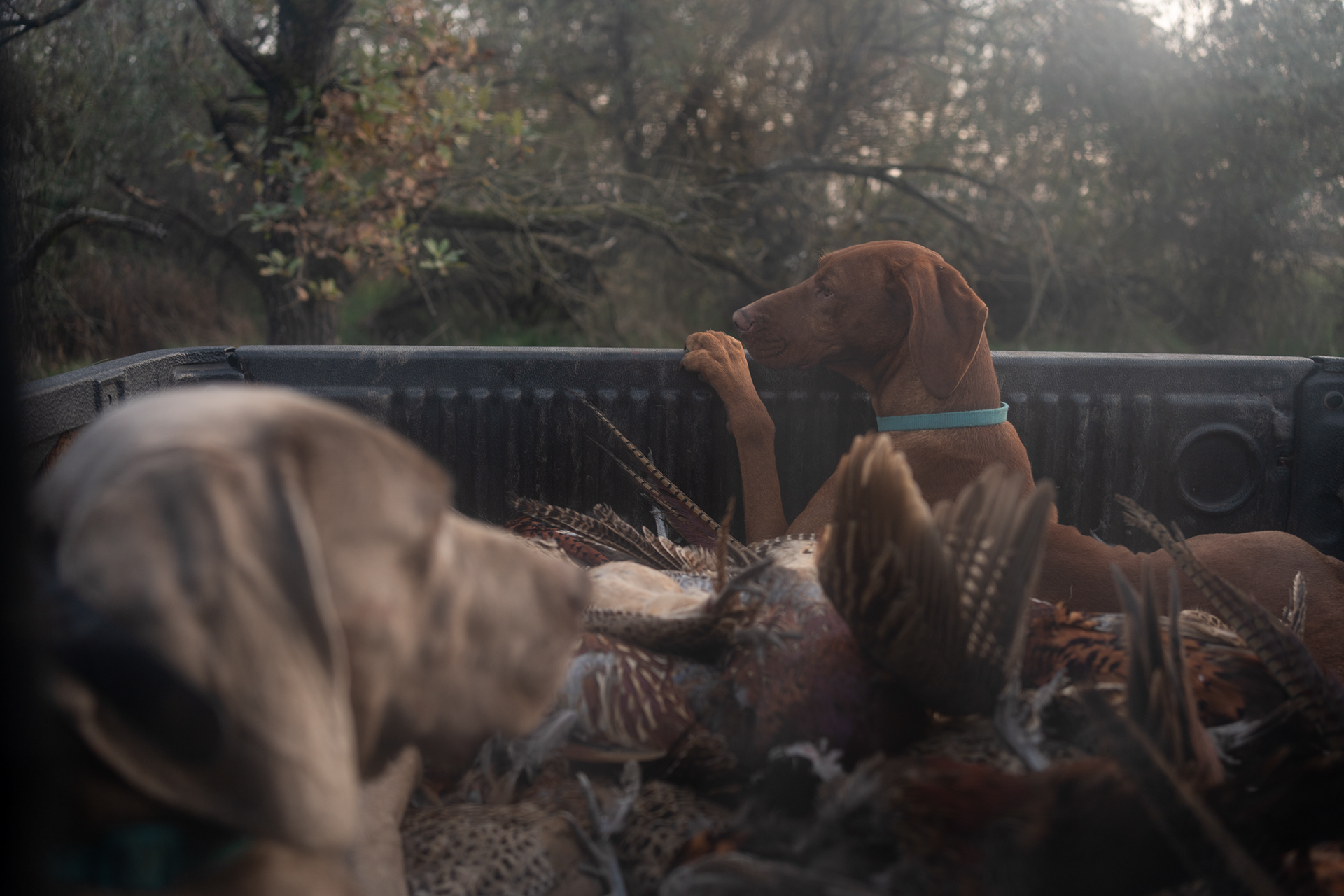
Of the 700,940 pheasants reported for planned artificial breeding, 629,970 are designated for 'planned release for hunting,' while 70,935 are intended for 'planned release for natural population replenishment.'
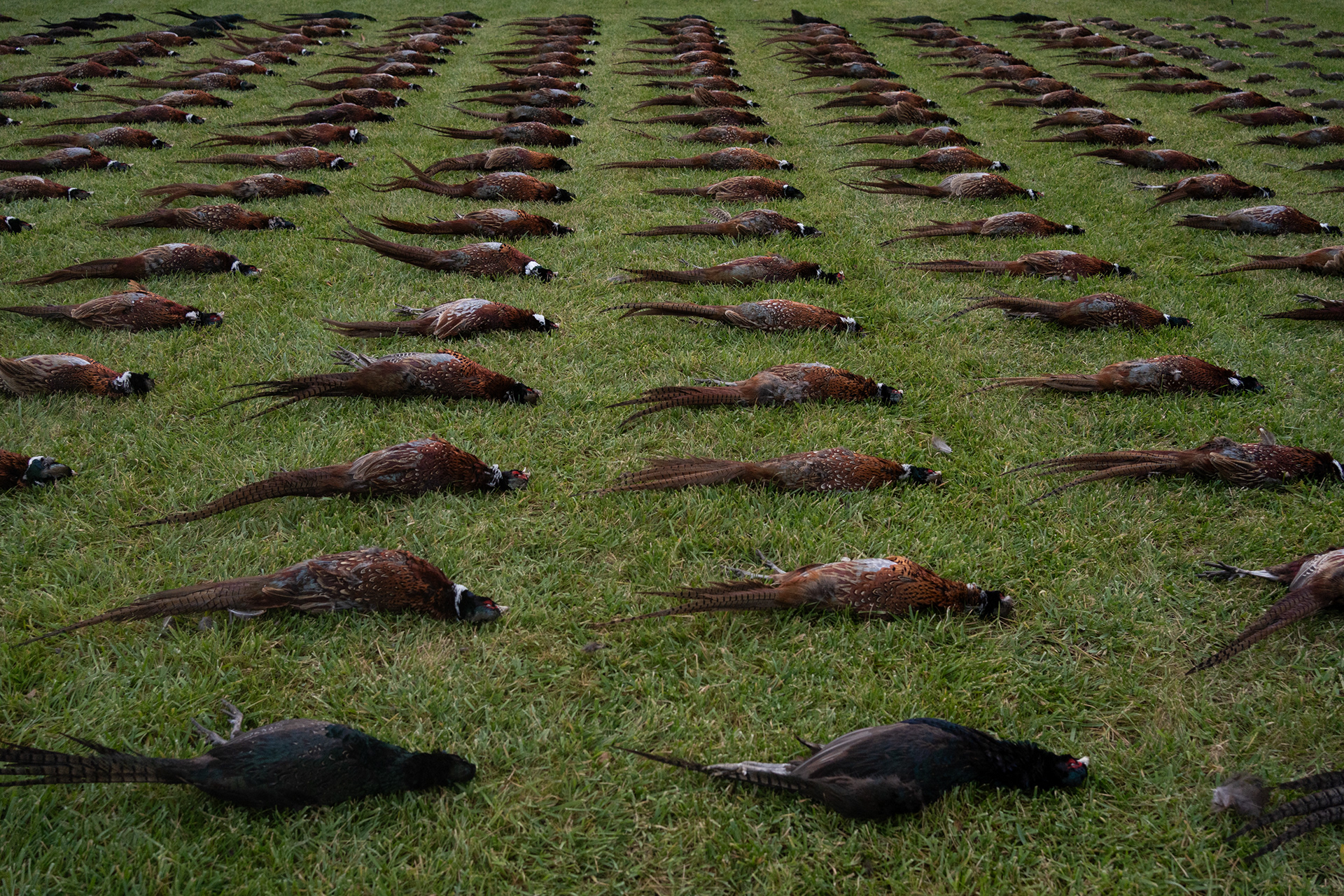
At the end of a hunt, it is customary to pay final respects to the game. This tradition includes laying out the animals, preparing the game display after the hunt, followed by a ceremonial tribute.
